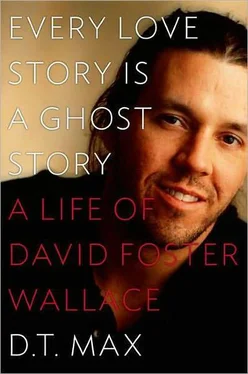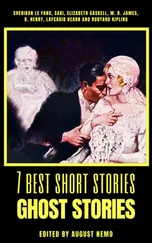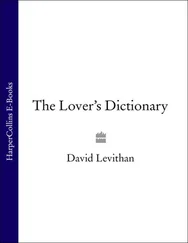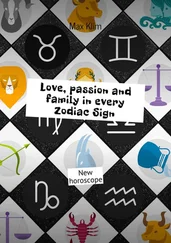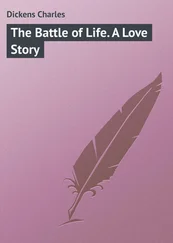At Amy’s wedding, in July, David was a “bridesman,” his hair gathered in a ponytail. Everyone found him in good spirits. His “dread [of] the various eddies of such a confluence” (his phrase to Franzen) did not show, and if anyone noticed that things were cool between him and his mother, no one said anything.
Wallace was looking forward to the start of the fall 1994 semester. The department was allowing him to teach an undergraduate introductory course in literature. This had been his quiet wish since coming to ISU. Now after a year of hard labor, he was to be let out of the ghetto of creative writing classes. The equation that the more he taught the less he wrote had never entirely disappeared from his mind, and it was also true that the simpler what he taught was, the lower the impact on his own creativity; the course would grow to be a favorite of his over the years. After the formal description of the course in the syllabus, he told his students what he was really hoping to have happen:
In less narcotizing words, English 102 aims to show you some ways to read fiction more deeply, to come up with more interesting insights on how pieces of fiction work, to have informed intelligent reasons for liking or disliking a piece of fiction, and to write — clearly, persuasively, and above all interestingly — about stuff you’ve read.
This was a return to teaching’s first purpose. Wallace liked to sit in his classes, flannel shirt tied around his waist, straddling a backward-facing chair, rocking, as he discoursed on character and pacing. He reminded one student of “an engineer of literature,” pulling out the building blocks of stories — voice, narrative structure, point of view. He often used writers of popular fiction — Jackie Collins, Thomas Harris, and Tom Clancy among others — for this purpose, because the components of their fiction were easy to identify and it also made the point that a story did not have to be hard to be worth reading.
Meanwhile, Pietsch was reading Wallace, while Wallace brooded and waited for a response through the months. He wrote Franzen that Pietsch kept cracking “ominous hernia-jokes.” Pietsch had in fact had the manuscript tentatively set in type and confirmed that the novel, if printed as Wallace had written it, would be almost twelve hundred pages long. To make money on it, the publisher would have to charge more for each copy than anyone was likely to want to pay. He finally wrote a note to his anxious author in October 1994 warning him that though he loved “having this monster in my head,” there was going to have to be more cutting. Also, he pointed out that there were areas that had confused him in April that having a complete draft had not clarified: the book took too long to get going, and the characters at the Enfield Tennis Academy blurred in his mind. He still didn’t buy the back-and-forth among the merged United States, Mexico, and Canada and the angry Quebecois separatists. “There is no part of the novel I’m looking forward to rereading less than the sequence of colloquys between Marathe and Steeply on the mountain,” he wrote of the two secret agents. Then he responded to the two innovations Wallace had proposed in earlier letters: he was not excited by the idea of endnotes — footnotes would be easier on the reader, he felt — nor by the “Artaud-ish” ending. “Hundreds of pages of killer cartridges and stalking Canadians,” he objected, “and moving furniture and Avril’s affairs and James’s suicide — all those dingleberries in the air — and we don’t get to find out who or how or why?” But by the time he finished reading the manuscript a second time in December, he was cheerier. He acknowledged that he was beginning to see how tightly everything fit together. What looked arbitrary now worked. He even found the ending satisfying:
Hal’s breakdown, the one at the start of the novel, is approaching clearly enough that I finished the book guessing how he got from here to there…. The revelation that Hal’s known all along of his mom’s many affairs seems like a key to it all…I’m assuming now that this part of the story isn’t resolved more clearly…because Hal’s still avoiding it.
He added that “Gately’s hitting bottom…is gorgeous and very very powerfully sad,” and saw that endnotes might be better than footnotes — less “academic and daunting.” Maybe, he thought, Little, Brown could package the book with a bookmark so readers could keep their places.
Happier though Pietsch was, he still felt the book was too long. He wanted the same effect achieved with less. So just before Christmas he added hundreds of specific suggestions for cuts. And in February 1995, Wallace responded with a sixteen-page letter of his own, acceding, rejecting, and counterproposing, wheedling, in a bath of faux mea culpa language for having birthed such a complicated and long book. “I guess,” he wrote, “maybe I have an arrogance problem — I think I’d presumed in some of this stuff that it was OK to make a reader read the book twice.” But he dug in on the ending, where Pietsch still wanted more clarification: “We know exactly what’s happening to Gately by end, about 50 % of what’s happened to Hal, and little but hints about Orin. I can give you 5000 words of theoretico-structural argument for this, but let’s spare one another, shall we?”
Some of the new round of cuts Wallace took eagerly, other times with an undertone of reluctance. “Mugging of Joe D. in Cambridge. Cut, although it introduces three different characters and starts four different plotlines,” he groused at one point, agreeing to cut back one of the characters who dated all the way back to the Hammerhill boxes that had held some of his early attempts at the novel. Sometimes he wanted to keep a scene simply because it had been in the book for so long. Other times he threatened that if material were removed, longer, duller rewriting would rise up to plug the gap. Another of his favored tactics was to respond to a request for a cut with a condensation, turning ten pages into five or five into two, or taking the unwanted material and putting it in the endnotes, where some of his favorite passages went to make their last stand. Pietsch also hesitated to put the words “A Failed Entertainment” on a book people were supposed to buy. Wallace suggested it might go on the “frontispiece” instead. Pietsch objected that the problem with calling Infinite Jest “A Failed Entertainment” anywhere was “it’s not,” and it quietly disappeared from the manuscript.
The winter of 1994–95 Wallace took a major step. After almost a decade of an itinerant life, he bought a house. It was the largest asset he had ever owned and he thought of it as much as anything as a down payment on his maturity. The house had three bedrooms and a little patio in front and a yard in the back that he had fenced off for Jeeves. It was made of brick, allaying a fear of tornadoes that dated back to his childhood. The house stood at the edge of town, near trailer parks and a slaughterhouse and also open land; down the street were cornfields, much as with his childhood home in Urbana. He was particularly pleased that his mail address was “Rural Route 2,” rather than a street address. Wallace moved in with his books and manuscripts and soon letters from Franzen and DeLillo and then a copy of the Saint Francis prayer appeared on the walls.
Wallace had never owned anything bigger than a car before and he approached his new possession as if everything to do with it were a cause of wonder, a stance that also served to reassure him that though he was now a homeowner he had not totally sold out. “I bought a house,” he wrote to Don DeLillo in May,
it’s small and brick and next to a horse pasture. It has what seems like a 6-acre lawn, and I bought the house in the winter and it didn’t occur to me that the grass in this lawn grows and will have somehow to be dealt with. I haven’t mowed a lawn since I folded my childhood lawn-mowing business at 13, and I see all my neighbors mowing their own 6-acre lawns like every fourth day, and Weed-Whacking, and dispersing seed and nitrates through devices that look like enormous flour-sifters on wheels, and I am not keen on becoming a lawn-obsessed homeowner. But it’s nice to own a house and not pay off a landlord’s mortgage.
Читать дальше
